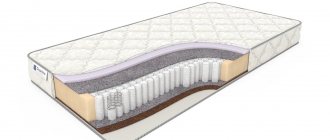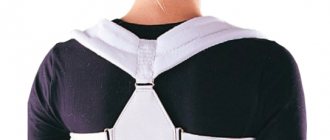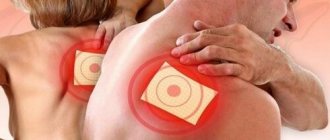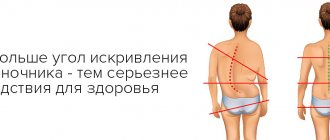Exercises to correct posture help maintain healthy back muscles and spine. Thanks to gymnastics and daily yoga, you can become the owner of a straight back and a stately figure, even at home. It is absolutely not necessary to sign up for a gym for this.
If you do not have serious pathologies of the spine or severe chronic diseases, you will be able to maintain your posture with the help of special exercises. The main thing is to do them regularly and make sure that the body is in the correct position throughout the day. Not an easy task for those who have been accustomed to slouching since childhood. But to achieve the desired result, you will have to work on yourself.
What does good posture look like?
Definition
Having good posture means holding your body in such a way that each joint bears an equal share of the load on the spine, and the pressure is evenly distributed across the surfaces of the joints.
The muscles should be relaxed and tense only to the extent necessary to maintain the pose. The spine should be curved naturally and gracefully
o - to be neither flat nor arched.
How you can check your posture at home:
- Stand in your underwear in front of a mirror in which you can be seen at full length.
- Look at yourself from the front and sides. Ask your family for their opinion - they may notice points you missed.
- Then stand 5 cm
from the wall, with your back to it, with your feet hip-width apart. - Lean back until you are pressed against the wall and notice which parts of your body you touch first.
Body touching the wall when your back is straight
If first
and at the same time
your buttocks
and
shoulders
, then you are standing correctly.
If one side
body touched the wall before the other, then you do not have central balance.
If the buttocks
, then your
pelvis
.
If the shoulders
, then your back is too tense and your pelvis is too forward.
If the back
, then you slouch and hunch your shoulders.
It may be helpful to pin a strip of paper, divided into large squares, to the wall before you begin checking (the graph paper that tailors use will work here). Then one of your friends can mark the position of your shoulders, hips and other parts of the body on it, and you can easily find out if they are at the same level. In the same way, you can check yourself from the sides.
How to keep your back straight
Correct posture means that you stand straight and relaxed, as if you are supported by an invisible vertical string passing through the back of your head, along your neck, between your shoulder blades and hips, and then through your knees to the floor.
If you have good posture, then:
- your head is raised up and slightly forward;
- shoulders are straight, relaxed and slightly pulled back;
- arms hang freely and so that the palms slightly protrude beyond the hips;
- the chest is straightened and the stomach is pulled in;
- the hips are at the same level, the muscles of the buttocks are also relaxed;
- the knees are slightly bent, and the weight is proportionally distributed over the entire surface of the feet;
- the body is not curved in any direction.
Incorrect posture
- The head leans forward rather than being held straight.
- The shoulders are tense and rounded instead of relaxed and pulled back.
- The shoulder blades stick out, protruding like wings instead of being flat.
- The chest is sunken and the back is bent, while the chest should be directed forward and the back kept straight.
- The pelvis is misaligned and not in line with the rest of the body.
- The head is tilted to the side rather than held straight.
- The shoulders are at different levels, causing the back to bend sideways rather than remain straight.
- The pelvis protrudes to the side, causing the hips to be at different levels rather than at the same level.
- The weight is placed on one leg and foot rather than distributed equally between the two legs.
www.liveinternet.ru
Types of incorrect posture
Attention!
- Using a stick reduces the likelihood of spinal injuries, but does not completely eliminate them.
- The greater the load, the greater the likelihood of injury when deviating from the neutral position and in general.
- Learning the neutral position is faster and the likelihood of success is higher if you practice NPP more often.
- After mastering the neutral position in squats and deadlifts on one and two legs, the skill needs to be periodically “refreshed”, including the inclusion of exercises with a stick in the warm-up.
- Avoid twisting the spine, especially under load and in combination with other movements.
Video explaining neutral position control.
Tips for keeping your back straight and not slouching
Correct head position
First, understand that the cause of a bent back is in your head. The main key to good posture is the correct position of the head and neck.
. Constantly lowering your gaze causes you to slouch. Get into the habit of looking at treetops or second-floor windows while walking. This will teach you to keep your chin higher than usual (although it may lead to you being thrown into an open sewer).
Phantom Wall
To understand what ideal you need to strive for, stand against a wall and lean against it with the back of your head, shoulder blades, buttocks and calves. Stay in this stupid position for a few minutes so that your muscles remember it well.
. Then, without changing your body position, separate yourself from the wall, imagining that it is stuck to your back. Walk around a little with a phantom wall behind your shoulders. In the future, whenever you refresh the sensations received in your mind, your body will reflexively assume the correct posture.
Posture and books
You can do mental exercises while sitting. Imagine that there is a book on your head
(the title and author do not matter, although it is desirable that it be Aristotle’s Poetics). An imaginary load, no worse than a real one, will send nerve impulses to the anterior rectus capitis muscle, which is responsible for the correct position of the neck.
Adopt army bearing. Imagine that any minute now the boss will enter the office and present you with an award. Hold your chest as if they were just now hanging a medal on it “For efforts before the Fatherland.” While straightening your shoulders, at the same time imagine that your shoulder blades are glued together with a strip of plaster (and not with tape, as in reality it is).
Items around
Make inanimate objects help you maintain correct posture. Raise your monitor
on the desktop. This will make your head stop drooping.
And here is the seat of the chair
, on the contrary, lower down so that your knees are at the same level (or even higher) with your hips. When your knees are below your hips, they pull your entire body forward, which quickly tires your back muscles.
If there is any mirror
, every time you pass by, look into it. Nothing makes you straighten your shoulders like the sight of your stooped reflection.
A cruel but effective method of correcting posture is a tightened trouser belt.
(unless it’s customary in your office to take it away at the entrance along with your laces). Posture is supported not only by the muscles of the back, but also by the abdominal muscles. Having stuck out our stomach, we “deflate”: our shoulders drop, our back hunches. A tight belt forces you to keep your stomach pulled in, which also affects your posture.
Speakers' technique
Use the trick that television announcers use to hide the fact that in life they are all stooped and hunchbacked. Sit on the very tip of the chair
. To maintain such a precarious position, you will have to constantly worry about maintaining balance, and this is only possible with a straight back.
If you want to be even more like the leaders (twist your body, wave your arms and earn a lot), put your left leg under the chair
, and
pull the right one forward
. This will help maintain both balance and a perfectly straight back. And maybe they will even recognize you on the street, like those announcers you look up to.
pikabu.ru
Video on the topic
How to sit at the table correctly
90° rule. This means that the bend angle of your elbows, hip joints and knees should be 90° or more (let's say range 80-100°
).
In this case, the legs from the knee to the foot and the arms from the shoulder to the elbow should be perpendicular to the floor
, and the legs from the hip to the knee and the arms from the hand to the elbow should be parallel to it.
entire foot should be on the floor.
, if the ratio of the height of the table and chair does not allow this, then
a stand
.
The furniture you sit on should support your spine as naturally as possible. While sitting at the computer, you should not hunch over, throw your head back or tilt it forward. It is necessary to take a relaxed and comfortable position, leaning back in a chair or armchair so that the monitor screen is at arm's length
away from you, and its upper third was located
at the level
of your
eyes
.
Since when working with documents or while surfing the Internet, the most important and interesting information is located at the top of the screen, this placement will allow you to keep it in the most convenient visual area. And at the same time, when you need to move your gaze to another part of the screen, you do not have to tilt or tilt your head, which reduces the load on the neck muscles.
kkg.by
Definition
In the literature we were able to find a Punjabi definition for "neutral zone". Neutral zone
(10, 11) – a position within the range of motion of the spinal segment, at which the load on the passive, osteo-ligamentous structures is minimal. For the spine as a whole, the neutral zone is normally relatively small. In the neutral zone, the load on the intervertebral discs, muscles and ligaments is distributed evenly, which increases their resistance to mechanical stress.
Hence, neutral spine position (NSP)
– a condition of the musculoskeletal system in which the neutral zone is preserved in all segments of the spine. In theory, the neutral position provides the safest position for the joints of the spine, especially the intervertebral discs. Typically, NPP in the literature refers to the position of “normal posture” while standing.
Orthopedic chairs for straight posture
If you haven't heard of the kneeling chair yet, you're missing out. This is a special orthopedic chair, sitting on which you will, willy-nilly, keep your back as it should.
Purpose of the kneeling chair:
- reduce the load on the back muscles;
- redistribute body weight and the load on the spine during prolonged sitting;
- create conditions for natural posture.
With its external unusualness, the chair provides unloading of the lower spine, the effect of compression of blood vessels on the hips is reduced, body weight is more evenly distributed over three support points, and can be used for training and posture correction.
Important
The seating position this chair creates restores the natural S
-shape of the back, which is closer to the profile of the back in a standing position.
This occurs due to an increase in the angle between the axis of the body and the axis of the hips. This reduces the load on the intervertebral discs
, the spine begins to work on bending, and not on compression and deformation of the discs. Restoring the correct profile of the spine's curves is facilitated by shifting the load axis to the center of the body.
One of the most popular models, which is shown in the photo above, is the Gess “Vertebra Pro”. Six months ago I bought myself this kneeling chair. It took me a long time to decide, because at first glance it looks terribly unusual and it was generally unclear whether it was comfortable to sit on or not. It turned out to be convenient. I stopped intentionally watching my back altogether.
while working at the computer. The posture itself is straight, the lower back does not become stiff. The only thing is that my family still giggles and looks at me askance.
When sitting in a normal office chair, the entire load falls on the lower back.
- you can feel this by lifting your elbows or wrists off the table and lifting your feet off the floor. This occurs due to the incorrect bending of the body, when the axis of the load moves forward, you need to lean on the wrists to compensate for the incorrect load on the back. Sitting on a kneeling ergonomic chair allows you to transfer some of the stress from your lower back to your knees and hips. This is facilitated by a body position that resembles that of a rider.
www.tsuricom.com.ua
What affects posture
People slouch for a variety of reasons.
The first and extremely important factor is our emotions. Yes, a person slouches not only because of back problems, but because of his own state of mind. Usually, when we are dejected or upset, our whole body speaks about it: our head, shoulders drop, and our back is bent. It seems as if emotions physically press on us with their weight and force us to bend. And vice versa - when we are in high spirits, rushing to meet something pleasant and joyful, we seem to strive to become taller and reach for the sky. As a result, the back is straightened, the head and chin are proudly raised, and the shoulders are straightened.
Another reason is neck and spine injuries. For example, posture can deteriorate due to displacement of the vertebrae. Or, for example, if a child was injured during childbirth, there is a possibility that over time he will develop flat feet and scoliosis. Interestingly, in such cases, trying to keep your back straight can only do harm. Because a twisted state is the only way to maintain balance and not put unnecessary stress on the damaged skeleton.
Finally, the third reason is a weak muscle corset. Sometimes we find it difficult to keep our back straight simply because our muscles can't handle it.
How to sleep so that your back does not bend in your sleep
The most suitable choice is lying on your back or side.
If a person lies and sleeps on his side, discomfort in the neck and along the entire spine is reduced. This pose is perfect for pregnant women. Use the right orthopedic mattress and pillow to keep your spine aligned.
How to lie and sleep incorrectly
- It is very dangerous, especially for adults, to lie on their stomach. If a person sleeps on his stomach, he automatically turns his head to the right and left, while the rotation itself can cause compression of the arteries and nerves, cerebral circulation may be impaired and even the risk of stroke increases.
- It is very harmful to sleep on an unsuitable mattress (too dense or too soft), which will not allow the spine to maintain its physiological position.
- It is also harmful to sleep without a pillow or on a soft pillow, which also bends the spine.
manual-deluxe.com
conclusions
According to theoretical assumptions and limited scientific data, the use of EBP will allow (urgently and long-term) to reduce the risks of damage to the intervertebral discs and ligaments of the spine, especially during resistance training. It is advisable to learn to bend over and lift (lower) objects with a “multi-directional” lumbopelvic rhythm. The preferred strategy for lifting loads with increased energy expenditure, which uses more strength in the lower extremities, and, on the contrary, the spine is located closer to the vertical and neutral position.
Posture correctors and corsets
Poor posture occurs in a person when he is weakened
and
does not function properly
.
Posture correctors and reclinators
– special orthopedic products that help accustom the spine to a physiologically correct position, as well as correct existing deformations and curvatures.
Operating principle (how the corrector works)
The posture corrector straightens your back, pulls your shoulders back and brings your shoulder blades together. Thus, correct posture is formed or restored; the corrector helps to develop it. The load on the spine is reduced, and back pain is reduced.
You feel your posture straighten out and the feeling of stooping disappears. This muscle memory
remains even after removing the corset. In the future, you will want to remain in a position with a straight back even without a corrector. This pose persists and becomes familiar.
Attention!
The question “Do I need a posture corrector, and which one should I choose?” — address to an orthopedist or vertebrologist. You can't do it on your own
make such decisions. Wearing concealer without good reason can backfire and cause harm to yourself. The back will get used to the support, the muscle “corset” will weaken, the muscles will stop working as expected and will begin to atrophy. In the future, you simply will not be able to do without a corrector; you will suffer from chronic back pain.
www.ortix.ru
Electronic correctors that can be used without a doctor’s prescription
There is such a type of correctors as electronic
.
These are harmless but effective devices that can be used without
a doctor’s prescription. What are they and how do they work?
These are miniature devices that are attached to underwear or glued directly to the body (like a patch). When a person begins to slouch, the corrector vibrates
, reminding you that it is time to take the correct position.
Russian development – “Master of Posture”
The gadget is sold in two versions for children and adults, with differences in packaging design. You can buy with delivery here.
In the kit you will find detailed instructions with a training program and answers to the most frequently asked questions, as well as, in addition to the sensor:
- clothing fastening element;
- replaceable stickers for attaching the sensor to the body (designed for approximately a 30-day course);
- spare battery;
- a special device for “pushing out” the battery.
To put the gadget into action, you need to secure it in one of the ways on your body or clothing with the arrow pointing up and press the button, thereby fixing the desired position.
The gadget does not synchronize with anything, and feedback is only possible in the form of a vibration signal.
- When you press the button, there is a single vibration signal, indicating that the pose is fixed. If your posture is violated for more than 50-60 seconds,
you will receive a 5-fold vibration notification, noticeable by ear, especially in a quiet room. - Notifications are not continuous: in case you remain in the wrong position, you will receive a subsequent notification again only after 50-60 seconds
. - You can recalibrate the sensor at any time.
- The device can be paused by placing it on a horizontal surface or by holding the button. Pause information signal - double vibration.
habr.com
For more visual reviews of the Posture Master, watch the video below:
Video on the topic
Video on the topic










